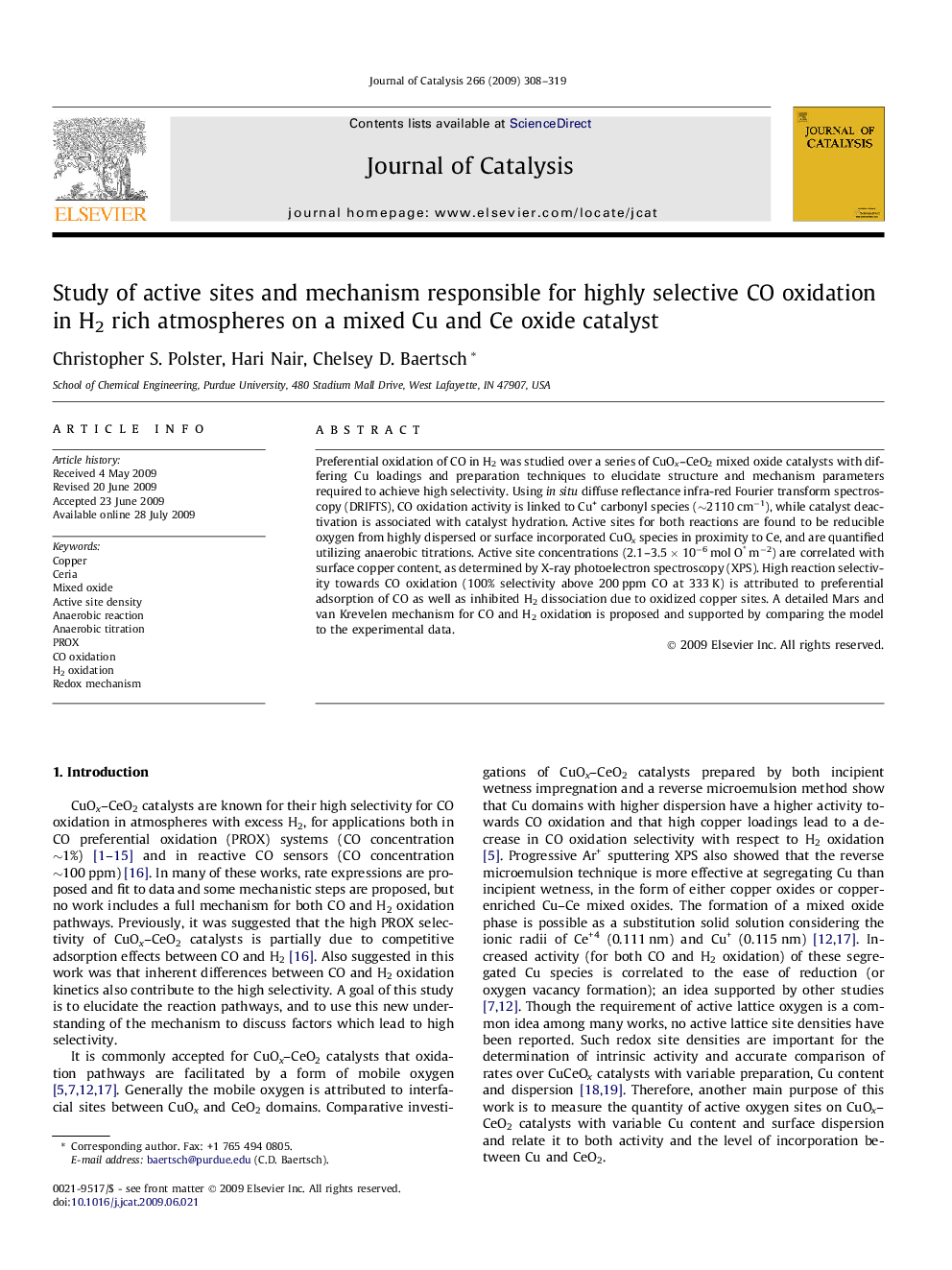| Article ID | Journal | Published Year | Pages | File Type |
|---|---|---|---|---|
| 62596 | Journal of Catalysis | 2009 | 12 Pages |
Preferential oxidation of CO in H2 was studied over a series of CuOx–CeO2 mixed oxide catalysts with differing Cu loadings and preparation techniques to elucidate structure and mechanism parameters required to achieve high selectivity. Using in situ diffuse reflectance infra-red Fourier transform spectroscopy (DRIFTS), CO oxidation activity is linked to Cu+ carbonyl species (∼2110 cm−1), while catalyst deactivation is associated with catalyst hydration. Active sites for both reactions are found to be reducible oxygen from highly dispersed or surface incorporated CuOx species in proximity to Ce, and are quantified utilizing anaerobic titrations. Active site concentrations (2.1–3.5 × 10−6 mol O∗ m−2) are correlated with surface copper content, as determined by X-ray photoelectron spectroscopy (XPS). High reaction selectivity towards CO oxidation (100% selectivity above 200 ppm CO at 333 K) is attributed to preferential adsorption of CO as well as inhibited H2 dissociation due to oxidized copper sites. A detailed Mars and van Krevelen mechanism for CO and H2 oxidation is proposed and supported by comparing the model to the experimental data.
Graphical abstractReaction mechanisms and active sites are studied for CO and H2 oxidation on CuOx–CeO2 catalysts. High selectivity results primarily from an inhibition of H2 dissociation by oxidized sites.Figure optionsDownload full-size imageDownload high-quality image (93 K)Download as PowerPoint slide
